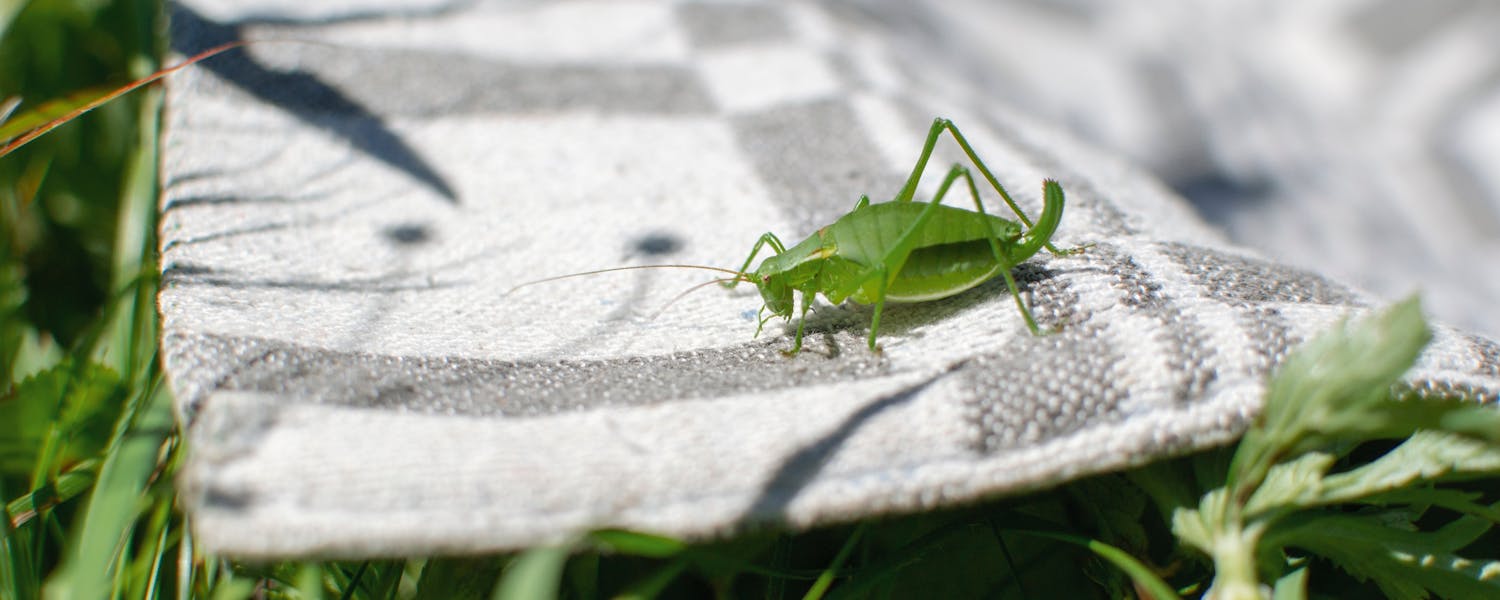Seven fun facts about crickets
12 July 2020
3 min read
1. Named after their sound
Crickets are primarily known for their chirping and the loud noise they make. And this is also where the name of the animal comes from, as they are named after the sound they make [5]. Cricket stems from the French word criquet, which is what people thought the chirps to sound like.
2. One sound per species
In total, there are about 900 different species of crickets. And every single one of these has its own unique chirp.
3. They sing with their wings...
Crickets stridulate (making sound by rubbing body parts together) to make their sound [1]. They rub the front wings together to generate this unique noise. The front wings contain a comb-like edge that, when rubbed against the surface of the opposite wing, produces a chirp. As is common in the animal kingdom, the males make these sounds to attract females. Females do not chirp at all.
Researchers have managed to recreate the sound of an ancient cricket by merely analyzing the structure and shape of some fossilized wings [2].
4. ... listen with their legs,
While making noise with body parts is not uncommon, it gets a little weirder. They have auditory organs to hear each other's chirps that are located on their front legs [3]. So they sing with their wings and listen with their legs!
5. ... and breath through holes.
One more then, crickets (as is common with insects) don't breath through a mouth or nose nor have lungs. They have small holes in the sides of their body called spiracles through which they take in air [3].
6. Natural thermometers
Now this is actually cool, because did you know that you can figure out how warm it is by listening to the chirps of a cricket? Crickets stridulate (remember?) faster when it's warmer outside and as their wings rub faster the chirping becomes faster too. A professor called Dolbear even published an equation, Dolbear's Law, to calculate the temperate outside using the rate of the chirps [4]. The following equation 50 + ((N - 40) / 4), where N = number of chirps per minute, calculates the temperature in Fahrenheit for you. Well, more or less. All it takes is figuring out which species you're listening to and the age and mating cycle of the cricket to get the exact temperature, as these also appear to have an effect on the chirping. Sounds easy right!?
7. They come in every color of the rainbow
If you think of a cricket, you probably imagine a small and dark/brown version of the big and green grasshopper. Even though in Europe these are most common, there are crickets in every color: black, brown, green (like on the photo), red, yellow, orange, green etc. Especially in the tropics, where most of the cricket species are found anyway, come in a wide variety of colors and shapes. Go and google for example the "handsome trig" or the "snowy tree cricket" for some pretty colors. Or look for the "mole cricket" to also see how ugly a cricket can be.
- Stephanie L. Richards. (2018). CRICKET SOUNDS: WHY DO CRICKETS CHIRP? Accessed June 16th, 2020 at https://www.terminix.com/blog/science-nature/why-crickets-chirp/
- Brian Owens (Feb 6, 2020). The sweet song of a Jurassic cricket. Accessed June 16th, 2020 at http://blogs.nature.com/news/2012/02/jurassic-cricket.html
- Assured Environments (Jun 28, 2017). The 10 weirdest facts about crickets. Accessed June 16th, 2020 at https://www.assuredenvironments.com/blog/post/the-top-10-weirdest-facts-about-crickets
- Hadley, Debbie. (March 10, 2020). How to Use Crickets to Calculate Temperature. Accessed June 16th, 2020 at https://www.thoughtco.com/how-to-use-crickets-to-calculate-temperature-1968372
- Rosemary Mosco (Jan 14, 2020). 11 Cute Facts About Crickets. Accessed June 17th, 2020 at https://www.mentalfloss.com/article/83942/11-cute-facts-about-crickets

